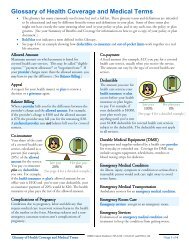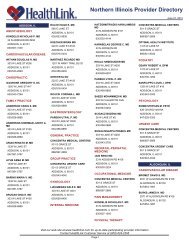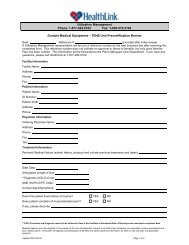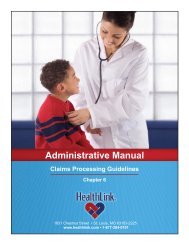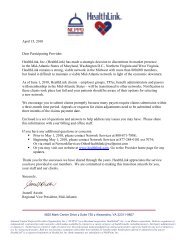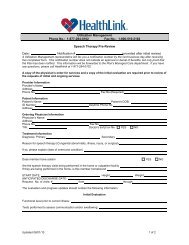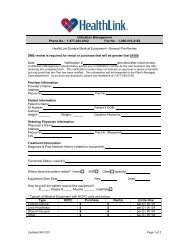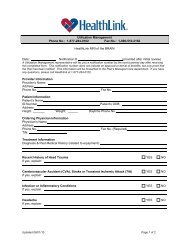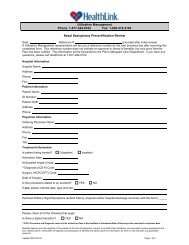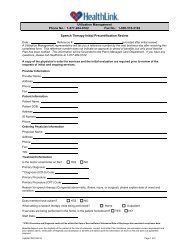State of Illinois - HealthLink
State of Illinois - HealthLink
State of Illinois - HealthLink
Create successful ePaper yourself
Turn your PDF publications into a flip-book with our unique Google optimized e-Paper software.
intrauterine insemination (IUI) cycles, the use <strong>of</strong> frozen sperm in IVF cycles does not<br />
lower the chance <strong>of</strong> pregnancy.<br />
Donor eggs are an option for women with a uterus who are unlikely or unable to conceive<br />
with their own eggs. Egg donors undergo much the same medical and genetic screening as<br />
sperm donors. Until recently, it has not been possible to freeze and quarantine eggs like<br />
sperm. Recent advances in oocyte freezing, though, have made this a possibility, and there<br />
are a few companies and clinics that are using such an approach. The egg donor may be<br />
chosen by the infertile couple or the ART program. Egg donors assume more risk and<br />
inconvenience than sperm donors. In the United <strong>State</strong>s, egg donors selected by ART<br />
programs generally receive monetary compensation for their participation. Egg donation is<br />
more complex than sperm donation and is done as part <strong>of</strong> an IVF procedure. The egg donor<br />
must undergo ovarian stimulation and egg retrieval. During this time, the recipient (the<br />
woman who will receive the eggs after they are fertilized) receives hormonal medications<br />
to prepare her uterus for implantation. After the retrieval, the donor’s eggs are fertilized by<br />
sperm from the recipient’s partner and transferred to the recipient’s uterus. The recipient<br />
will not be genetically related to the child, but she is a biologic parent in the sense that she<br />
will carry the pregnancy and give birth. Egg donation is expensive because donor selection,<br />
screening, and treatment add additional costs to the IVF procedure. However, the relatively<br />
high live birth rate for egg donation, over 50% nationally, provides many couples with<br />
their best chance for success. Overall, donor eggs are used in nearly 10% <strong>of</strong> all ART cycles<br />
in the United <strong>State</strong>s.<br />
In some cases, when both the man and woman are infertile, both donor sperm and eggs<br />
have been used. Donor embryos may also be used in these cases. Some IVF programs<br />
allow couples to donate their unused frozen embryos to other infertile couples. Appropriate<br />
screening <strong>of</strong> the individuals whose genetic embryos are used should adhere to federal and<br />
state guidelines. The use <strong>of</strong> donor sperm, eggs, or embryos is a complicated issue that has<br />
lifelong implications. Talking with a trained counselor who understands donor issues can<br />
be very helpful in the decision-making process. Many programs have a mental health<br />
pr<strong>of</strong>essional on staff or the physician may recommend one. If a couple knows the donor,<br />
their physician may suggest that both the couple and the donor speak with a counselor and<br />
an attorney. Some states require and most IVF centers recommend an attorney to file<br />
paperwork for the couple with the court when donor gametes or embryos are used.<br />
• Donor means an oocyte donor or sperm donor. (see “Oocyte Donor”<br />
for further explanation)<br />
• Educational in Nature means the primary purpose <strong>of</strong> any drug, device, medical treatment<br />
or procedure is to provide the patient with any training in matters that are other than<br />
directly medical.<br />
• Embryo means a fertilized egg that has begun cell division and has completed the preembryonic<br />
stage.<br />
• Embryo Transfer means the placement <strong>of</strong> the pre-embryo into the uterus or, in the case <strong>of</strong><br />
zygote intrafallopian tube transfer, into the fallopian tube.<br />
160000 Page 40



